Description
Bring the vibrant flavors of the Levant to your kitchen with RoboFood Zaatar Seasoning. A fragrant and earthy blend of premium herbs, sesame, and tangy sumac, this mix is inspired by traditional Middle Eastern cuisine. Perfect for sprinkling over breads, salads, meats, or dips, it delivers a zesty, nutty flavor that elevates everyday cooking into an authentic Levantine experience.
Key Features
- Authentic Blend – A carefully balanced mix of thyme, oregano, toasted sesame seeds, and sumac for true Levantine flavor.
- Premium Ingredients – Made from 100 percent natural, high-quality herbs and spices with no artificial colors or preservatives.
- Versatile Use – Ideal for sprinkling over flatbreads, hummus, labneh, roasted vegetables, grilled meats, or salads.
- Ready-to-Use – Simply sprinkle before serving or mix with olive oil to create a delicious dip or marinade.
- Sealed Freshness – Packed in a 50g food-grade pouch to preserve aroma, freshness, and taste.
How to Use
- Sprinkle over warm pita or flatbreads with olive oil for the classic zaatar bread.
- Mix with olive oil as a dip for bread or as a marinade for chicken and lamb.
- Add to salads, hummus, labneh, or roasted vegetables for a zesty, herby flavor.
Product Details
Brand: RoboFood
Product: Zaatar Seasoning
Shelf Life: 12 months (store in a cool, dry place)
Allergen Info: Made in a facility that may process nuts, sesame, soy, and wheat.
Ingredients & Cultural Story - RoboFood Zaatar Seasoning
body {
font-family: 'Segoe UI', Tahoma, Geneva, Verdana, sans-serif;
line-height: 1.7;
color: #444;
background-color: #f9f7f4;
padding: 20px;
max-width: 900px;
margin: auto;
}
h2 {
color: #6b5e53;
border-bottom: 2px solid #c1a98e;
padding-bottom: 8px;
margin-bottom: 20px;
font-size: 1.8em;
}
h3 {
color: #8a7c6d;
margin-top: 25px;
font-size: 1.4em;
}
p {
margin-bottom: 16px;
text-align: justify;
}
ul {
margin: 16px 0;
padding-left: 20px;
}
li {
margin-bottom: 10px;
}
.highlight {
background-color: #fff8e1;
padding: 15px;
border-left: 4px solid #c1a98e;
font-style: italic;
margin: 20px 0;
}
Ingredients & Cultural Story
RoboFood Zaatar Seasoning is more than just a spice blend—it’s a celebration of centuries-old culinary traditions, rooted deeply in the heart of the Levant. This aromatic mixture carries the essence of Middle Eastern heritage, where food is not merely sustenance but a language of love, hospitality, and identity. Every jar of RoboFood Zaatar is crafted to honor this legacy, combining time-honored ingredients with modern quality standards to bring you an authentic taste of the region’s soulful kitchens.
The Heart of the Blend: Premium Ingredients
At the core of our Zaatar seasoning lies a harmonious trio: wild thyme, toasted sesame seeds, and vibrant sumac. Each ingredient is carefully selected for its purity, potency, and origin, ensuring a blend that sings with authenticity and depth.
Wild Thyme – Sourced from sun-drenched hillsides across Lebanon, Syria, and Palestine, wild thyme is the soul of traditional zaatar. Unlike cultivated thyme, wild thyme has a more intense, earthy fragrance and a slightly peppery bite. It grows naturally in rocky terrains, absorbing the mineral-rich soil and Mediterranean sun, which enhances its aromatic complexity. In our blend, it provides a warm, herbal base that lingers on the palate and evokes the scent of mountain breezes.
Oregano – Complementing the thyme is high-grade oregano, another native herb of the Levantine landscape. Known for its slightly floral and camphorous notes, oregano adds balance and depth to the mix. It’s not overpowering, but rather acts as a bridge between the herbal and nutty elements, rounding out the flavor profile. Our oregano is air-dried to preserve its essential oils, ensuring maximum freshness and potency in every sprinkle.
Toasted Sesame Seeds – These tiny golden seeds are the source of zaatar’s signature nuttiness. We use only premium, hulled sesame seeds that are lightly toasted to unlock their rich, buttery aroma. The toasting process is done slowly and carefully to avoid bitterness, resulting in a delicate crunch and luxurious mouthfeel. Beyond flavor, sesame seeds also contribute healthy fats and a subtle richness that makes zaatar more satisfying when used as a dip or spread.
Sumac – Perhaps the most distinctive ingredient, sumac lends zaatar its characteristic tang. This deep burgundy spice is made from ground dried berries of the Rhus coriaria shrub, which grows across the Mediterranean and Middle East. With a lemony, slightly fruity acidity, sumac brightens the blend and cuts through richness—making it ideal for pairing with olive oil, dairy, or grilled meats. Unlike vinegar or citrus, sumac’s acidity is gentle and complex, adding a layer of sophistication that defines authentic Levantine cuisine.
Together, these ingredients form a symphony of taste: herbal, nutty, tangy, and subtly earthy. RoboFood Zaatar Seasoning contains no fillers, artificial flavors, or preservatives—just pure, natural elements that have nourished generations.
A Journey Through Time: The Cultural Story of Zaatar
Zaatar is not just a seasoning—it’s a cultural emblem. Its history stretches back thousands of years, with references found in ancient texts, religious scriptures, and archaeological findings. The word “zaatar” itself comes from the Arabic term for wild thyme, but over time, it has come to represent the entire spice blend, as well as the beloved dish made by mixing it with olive oil and spreading it on flatbread.
In Levantine households, from Beirut to Amman and Jerusalem to Damascus, zaatar is a breakfast staple. Children grow up watching their mothers mix a spoonful of the blend with golden olive oil, then spreading it on warm markook or khubz bread. This simple act is a ritual of care, a daily reminder of connection to land and lineage. For many, the scent of zaatar and olive oil is synonymous with home.
Beyond the kitchen, zaatar holds symbolic meaning. In traditional Arab medicine, thyme was believed to strengthen the mind and improve memory—students were even encouraged to rub a mixture on their foreheads before exams. Sumac, rich in antioxidants, was valued for its digestive and anti-inflammatory properties. The blend, therefore, was not only flavorful but also seen as nourishing for both body and spirit.
Zaatar also plays a role in social and spiritual life. In some communities, it’s customary to offer zaatar bread to guests as a sign of welcome. During Ramadan, it’s a popular choice for suhoor—the pre-dawn meal—because it’s light yet sustaining. In rural areas, families still gather in spring to forage for wild thyme, turning the harvest into a communal event filled with songs, stories, and shared labor.
The preparation of zaatar is an art passed down through generations. While recipes vary by region and family, the core ingredients remain consistent. In Palestine, zaatar often includes a touch of marjoram for sweetness; in Syria, more sumac is used for a bolder tang; in Lebanon, the sesame seeds are more generously toasted. RoboFood honors these regional nuances by crafting a balanced blend that captures the essence of the entire Levant, without favoring one variation over another.
Fun fact: The tradition of zaatar is so cherished that in some countries, wild thyme harvesting is regulated to prevent over-picking and preserve the plant’s natural habitat. This reflects a deep cultural respect for sustainability and the land.
More Than a Seasoning: Zaatar in Daily Life
In Middle Eastern homes, zaatar is used in countless ways. It’s not confined to one meal or dish. It might start the day as a breakfast spread, flavor a lunchtime salad, or finish the night as a rub for grilled meats. Its versatility is unmatched. Some families even keep a small jar of zaatar on the table, like salt and pepper, to sprinkle on everything from eggs to yogurt to fresh vegetables.
One of the most beloved preparations is zaatar w zeit—a mix of zaatar and olive oil spread on warm bread. This humble dish is now celebrated globally, found in trendy cafes and gourmet markets. But for those from the region, it’s more than a food trend; it’s a taste of childhood, of family, of resilience.
RoboFood Zaatar Seasoning invites you to partake in this rich tradition. Whether you’re dipping bread, seasoning roasted vegetables, or marinating chicken, you’re not just cooking—you’re connecting to a culture that values flavor, community, and the simple joys of shared meals.
By choosing RoboFood, you support not only your own culinary exploration but also the preservation of a heritage that deserves to be celebrated, one sprinkle at a time.
Usage, Benefits & Recipes - RoboFood Zaatar Seasoning
body {
font-family: 'Segoe UI', Tahoma, Geneva, Verdana, sans-serif;
line-height: 1.7;
color: #333;
max-width: 900px;
margin: 0 auto;
padding: 20px;
}
h2 {
color: #4a6b5f;
border-bottom: 2px solid #d4e3dc;
padding-bottom: 8px;
margin-top: 30px;
}
h3 {
color: #5d7a6c;
margin-top: 20px;
}
ul, ol {
margin: 15px 0;
padding-left: 25px;
}
li {
margin-bottom: 8px;
}
blockquote {
background-color: #f4f8f6;
border-left: 5px solid #a3c9b8;
padding: 15px 20px;
margin: 20px 0;
font-style: italic;
color: #555;
}
.recipe-card {
background-color: #f9fbfa;
border: 1px solid #e0eae2;
padding: 18px;
border-radius: 8px;
margin: 20px 0;
box-shadow: 0 2px 5px rgba(0,0,0,0.05);
}
.tip {
font-size: 0.95em;
color: #5a5a5a;
font-style: italic;
}
Usage, Benefits & Recipes
RoboFood Zaatar Seasoning is more than just a spice blend—it’s a culinary passport to the sun-drenched hills and bustling markets of the Levant. With its harmonious combination of aromatic thyme, oregano, nutty toasted sesame seeds, and tangy sumac, zaatar offers a rich, complex flavor profile that enhances a wide range of dishes. Whether you're a seasoned home cook or just beginning to explore Middle Eastern cuisine, this versatile seasoning can transform your meals with minimal effort and maximum impact.
How to Use RoboFood Zaatar Seasoning
The beauty of zaatar lies in its simplicity and adaptability. You don’t need elaborate techniques or rare ingredients to enjoy its bold taste. Here are some of the most popular and delicious ways to incorporate this traditional blend into your everyday cooking:
- Zaatar Bread (Man’oushe): One of the most beloved ways to enjoy zaatar is spread over warm flatbread or pita brushed generously with olive oil. This classic Levantine breakfast, known as man’oushe, is a staple in Lebanon, Syria, Jordan, and Palestine. Simply drizzle olive oil over the bread, sprinkle a generous amount of zaatar, and enjoy it fresh and warm. It’s rustic, satisfying, and bursting with flavor.
- Dips and Spreads: Mix 1–2 tablespoons of zaatar with high-quality extra virgin olive oil to create an instant dip for bread, crackers, or raw vegetables. This mixture can also be swirled into hummus, labneh (strained yogurt), or baba ghanoush for an extra layer of depth and aroma.
- Marinades for Proteins: Combine zaatar with olive oil, lemon juice, and garlic to create a vibrant marinade for chicken, lamb, beef, or fish. Let the meat sit for at least 30 minutes (or overnight for deeper flavor) before grilling, roasting, or pan-searing. The result is tender, fragrant, and beautifully seasoned.
- Roasted Vegetables: Toss root vegetables like carrots, potatoes, or sweet potatoes with olive oil and zaatar before roasting. The blend caramelizes slightly in the oven, releasing its essential oils and creating a savory crust that elevates even the simplest side dish.
- Salads and Grain Bowls: Sprinkle zaatar over fresh green salads, tabbouleh, or grain-based bowls featuring quinoa, bulgur, or couscous. It pairs especially well with ingredients like chickpeas, tomatoes, cucumbers, and fresh herbs like parsley and mint.
- Eggs and Breakfast Dishes: Add a pinch of zaatar to scrambled eggs, omelets, or avocado toast. Its earthy tang complements the richness of eggs and dairy, making your morning meal more exciting and flavorful.
- Baked Goods: Incorporate zaatar into savory scones, crackers, or focaccia bread. The herbal notes and nuttiness of sesame seeds add complexity and a touch of authenticity to homemade baked items.
Health Benefits of Zaatar
Beyond its culinary appeal, zaatar is celebrated for its potential health benefits, rooted in both tradition and modern science. Each component of the blend contributes to its nutritional value:
- Thyme and Oregano: These herbs are rich in antioxidants and contain thymol and carvacrol—natural compounds known for their antimicrobial and anti-inflammatory properties. They may support respiratory health and aid digestion.
- Sumac: This deep red berry adds a citrusy tang and is packed with antioxidants, particularly anthocyanins, which help combat oxidative stress in the body. Sumac has also been studied for its potential to support heart health and blood sugar regulation.
- Toasted Sesame Seeds: A good source of healthy fats, protein, calcium, and magnesium, sesame seeds contribute a nutty richness and support bone and cardiovascular health. They also contain lignans, which may help balance hormones and reduce cholesterol.
When combined, these ingredients create a seasoning that’s not only delicious but also nourishing. Used regularly as part of a balanced diet, RoboFood Zaatar Seasoning can contribute to overall wellness while enhancing your meals with bold, natural flavors.
Traditional and Modern Recipes Featuring Zaatar
Let’s explore a few authentic and creative recipes that showcase the versatility of RoboFood Zaatar Seasoning.
Classic Zaatar Man’oushe (Levantine Flatbread)
Serves: 4 | Prep time: 10 mins | Cook time: 10 mins
- 4 pieces of pita or Arabic flatbread
- ¼ cup extra virgin olive oil
- 3–4 tablespoons RoboFood Zaatar Seasoning
Preheat oven or toaster oven to 350°F (175°C). Lightly warm the flatbreads. Brush each with olive oil, then sprinkle generously with zaatar, pressing it gently so it adheres. Bake for 5–7 minutes until edges are slightly crisp. Serve warm as a breakfast, snack, or appetizer. Tip: For an extra touch, top with a sprinkle of sesame seeds or a drizzle of honey.
Zaatar Roasted Chickpeas (Crunchy Snack)
Serves: 4 | Prep time: 5 mins | Cook time: 30 mins
- 1 can (15 oz) chickpeas, drained and dried
- 2 tbsp olive oil
- 1 tbsp RoboFood Zaatar Seasoning
- Salt to taste
Preheat oven to 400°F (200°C). Toss chickpeas with olive oil, zaatar, and salt. Spread on a baking sheet and roast for 25–30 minutes, shaking halfway, until golden and crispy. Cool and store in an airtight container. Perfect for snacking or topping salads.
Zaatar & Olive Oil Dip with Fresh Vegetables
Serves: 6 | Prep time: 5 mins
- ½ cup extra virgin olive oil
- 3 tbsp RoboFood Zaatar Seasoning
- 1 clove garlic, minced (optional)
- 1 lemon wedge
- Assorted vegetables (carrots, cucumbers, bell peppers, radishes)
Combine olive oil, zaatar, and garlic in a shallow bowl. Squeeze lemon juice over the top. Serve with fresh-cut vegetables or warm pita bread. This dip is ideal for gatherings, mezze platters, or healthy after-school snacks.
Zaatar-Spiced Grilled Chicken
Serves: 4 | Prep time: 15 mins (plus marinating) | Cook time: 20 mins
- 4 chicken breasts or thighs
- ¼ cup olive oil
- 2 tbsp RoboFood Zaatar Seasoning
- 2 tbsp lemon juice
- 2 cloves garlic, minced
- Salt and pepper to taste
Whisk together olive oil, zaatar, lemon juice, garlic, salt, and pepper. Coat chicken and marinate for at least 30 minutes (or up to 8 hours). Grill over medium heat until cooked through. Serve with rice, grilled vegetables, or in a wrap with tahini sauce.
“Zaatar is more than a spice—it’s a symbol of hospitality, heritage, and home. In many Levantine households, a jar of zaatar sits proudly on the dining table, ready to elevate every meal with warmth and tradition.” – Culinary Historian, Amal Nassar
RoboFood Zaatar Seasoning brings this cherished tradition into your kitchen with every sprinkle. Whether you're recreating family recipes or inventing your own, this blend invites you to explore the rich, sun-kissed flavors of the Middle East—one delicious bite at a time.
Customer Tips - RoboFood Zaatar Seasoning
body {
font-family: 'Segoe UI', Tahoma, Geneva, Verdana, sans-serif;
line-height: 1.7;
color: #333;
max-width: 900px;
margin: 0 auto;
padding: 20px;
background-color: #f9f9f9;
}
h2 {
color: #5a4a3f;
border-bottom: 2px solid #d4c4a8;
padding-bottom: 10px;
margin-bottom: 20px;
}
p {
margin-bottom: 15px;
text-align: justify;
}
ul {
margin-bottom: 20px;
padding-left: 20px;
}
li {
margin-bottom: 10px;
}
.tip-box {
background-color: #fff;
padding: 20px;
border-radius: 8px;
box-shadow: 0 2px 10px rgba(0,0,0,0.05);
margin-bottom: 20px;
}
.highlight {
background-color: #fff9e6;
padding: 2px 5px;
font-weight: 600;
color: #5a4a3f;
}
Customer Tips: How to Get the Most Out of RoboFood Zaatar Seasoning
Our customers love RoboFood Zaatar Seasoning for its rich, aromatic flavor and incredible versatility. Over time, we’ve gathered real-life tips and creative ideas from home cooks, food enthusiasts, and even professional chefs who’ve made zaatar a staple in their kitchens. Whether you're new to Middle Eastern cuisine or a seasoned fan, these practical, tested tips will help you unlock the full potential of this beloved blend.
One of the most popular and cherished ways to enjoy zaatar is by making zaatar bread—a simple yet unforgettable treat. Customers recommend warming fresh pita or flatbread slightly, brushing it generously with high-quality olive oil, and then sprinkling a thick layer of RoboFood Zaatar Seasoning on top. The warmth of the bread helps release the essential oils in the herbs, intensifying the aroma and flavor. For an even more indulgent experience, some mix the zaatar directly into the olive oil to form a paste before spreading it—this ensures every bite is evenly coated and bursting with flavor.
Many users have found that zaatar shines when used as a marinade base for proteins. Combine two tablespoons of zaatar with a quarter cup of olive oil, a squeeze of lemon juice, minced garlic, and a pinch of salt. This mixture works wonders on chicken breasts, lamb chops, or even fish fillets. Let the meat marinate for at least 30 minutes (or overnight for deeper flavor), then grill, roast, or pan-sear. The result is a beautifully seasoned dish with a complex, earthy profile that guests consistently rave about.
Don’t overlook zaatar’s potential in vegetable dishes. Roasted vegetables like eggplant, zucchini, cauliflower, and sweet potatoes take on a whole new dimension when tossed with olive oil and a liberal sprinkle of zaatar before baking. One customer shared that adding zaatar to roasted carrots brings out their natural sweetness while adding a tangy, herbal contrast. Another tip is to sprinkle zaatar over roasted potatoes just before serving—it adds a fragrant finish that elevates a simple side dish into something special.
For breakfast lovers, zaatar makes a fantastic addition to morning routines. Customers love mixing it into labneh or Greek yogurt and drizzling it with olive oil for a savory, protein-rich start to the day. Serve it with warm bread or crackers for dipping. It’s also a popular topping for avocado toast—simply mash ripe avocado on toasted sourdough, season with salt and pepper, and finish with a generous dusting of zaatar for a Mediterranean twist.
When using zaatar in dips and spreads, many customers recommend folding it directly into hummus, baba ghanoush, or white bean dips. Not only does it enhance the flavor, but it also adds visual appeal with its speckled texture. A common tip is to reserve a small amount to sprinkle on top before serving—this creates a layered taste experience and makes the dish look more inviting.
Baking enthusiasts have discovered creative ways to incorporate zaatar into baked goods. Try adding a teaspoon or two to homemade bread dough, focaccia, or savory muffins. One customer even uses it in cheese scones, combining it with feta and chives for a delightful savory bite. The herbal notes pair beautifully with buttery, flaky textures, making zaatar a secret weapon in gourmet baking.
For salads, zaatar adds depth without overpowering. Customers suggest using it as a finishing touch rather than mixing it in—this preserves its aromatic qualities. A light drizzle of olive oil followed by a sprinkle of zaatar on top of a green salad, grain bowl, or tabbouleh brings a warm, rustic note that ties all the ingredients together. It also pairs wonderfully with citrus-based dressings, where the sumac in the blend complements the tanginess of lemon or orange juice.
Some users have found success using zaatar in rice and grain dishes. Stir a teaspoon into cooked quinoa, couscous, or rice along with a bit of olive oil and chopped herbs. This simple trick transforms plain grains into a flavorful side dish that pairs well with grilled meats or roasted vegetables. One customer even uses it in rice pilaf with caramelized onions and toasted pine nuts for a Middle Eastern-inspired meal.
Don’t forget about eggs! Sprinkling zaatar over scrambled eggs, omelets, or shakshuka adds a gourmet touch. One tip is to mix zaatar into softened butter and spread it on toast before placing a fried egg on top—simple, satisfying, and full of flavor.
Storage is key to preserving freshness. Customers emphasize keeping the pouch sealed tightly and storing it in a cool, dark place—away from heat sources like the stove or oven. While zaatar doesn’t spoil quickly, its flavor diminishes over time if exposed to light and air. For longer shelf life, some transfer the seasoning to an airtight glass jar, which also makes it easier to access during cooking.
Finally, don’t be afraid to experiment. Zaatar is more than just a seasoning—it’s an inspiration. Try it on popcorn, pizza, roasted nuts, or even in salad dressings. The blend’s balance of herbal, nutty, and tangy notes makes it surprisingly adaptable. As one customer put it: “Once you start using zaatar, you’ll find yourself reaching for it in places you never expected.”
Join the growing community of zaatar lovers and discover your own favorite ways to use RoboFood Zaatar Seasoning. Your kitchen will thank you.

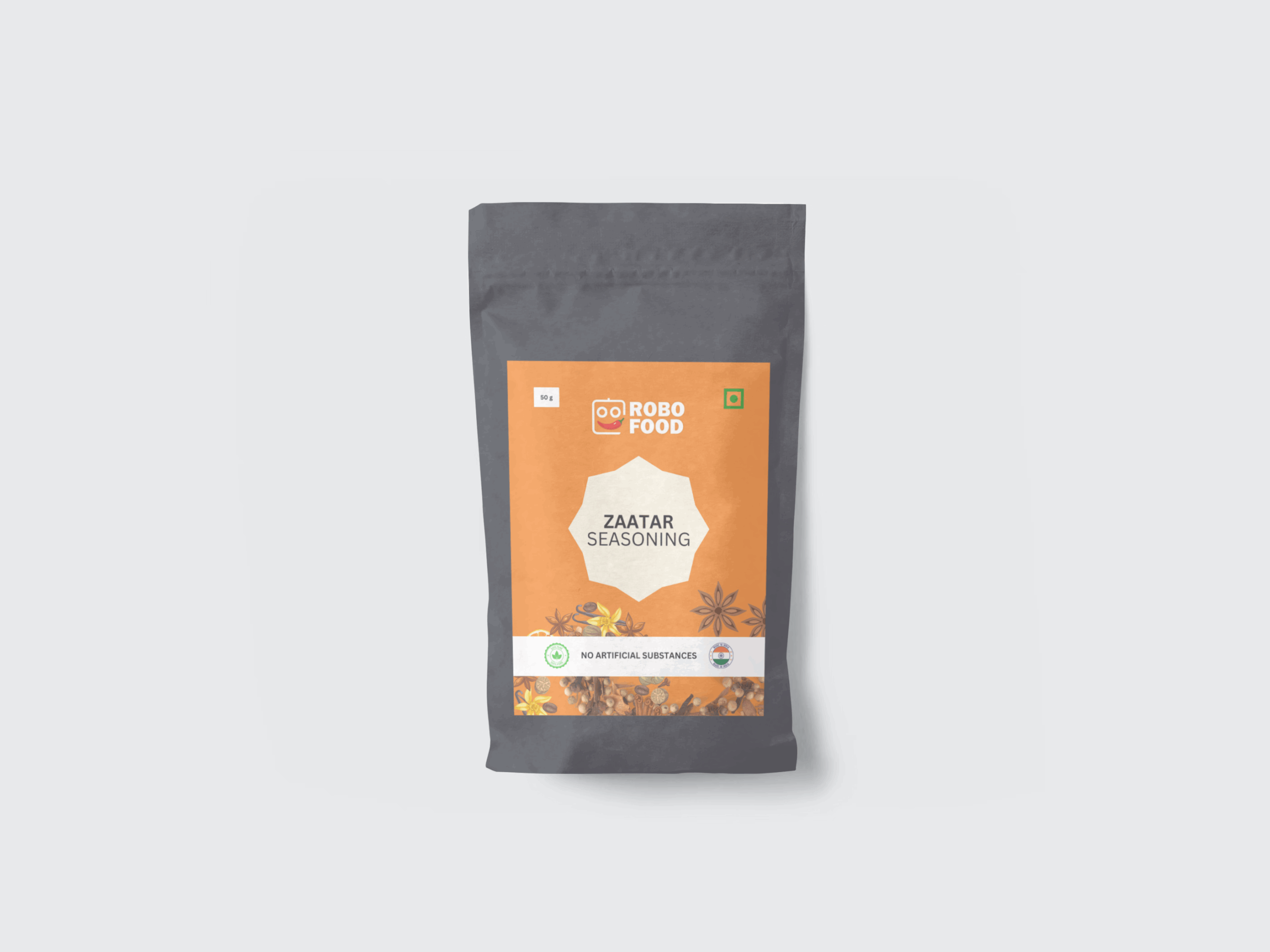
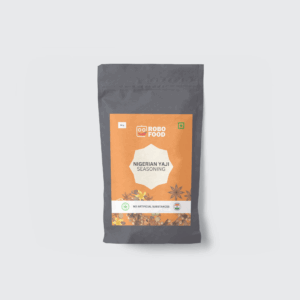
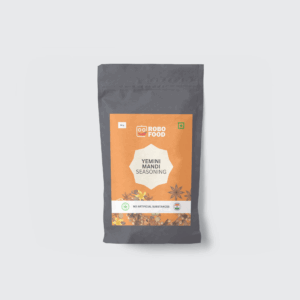
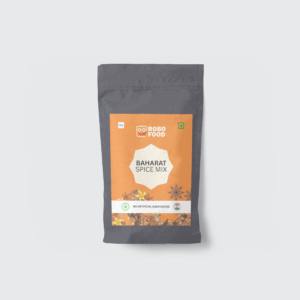
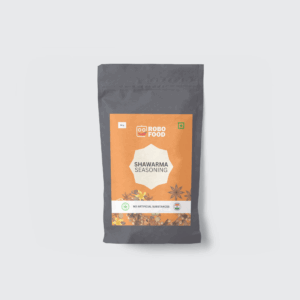
Reviews
There are no reviews yet